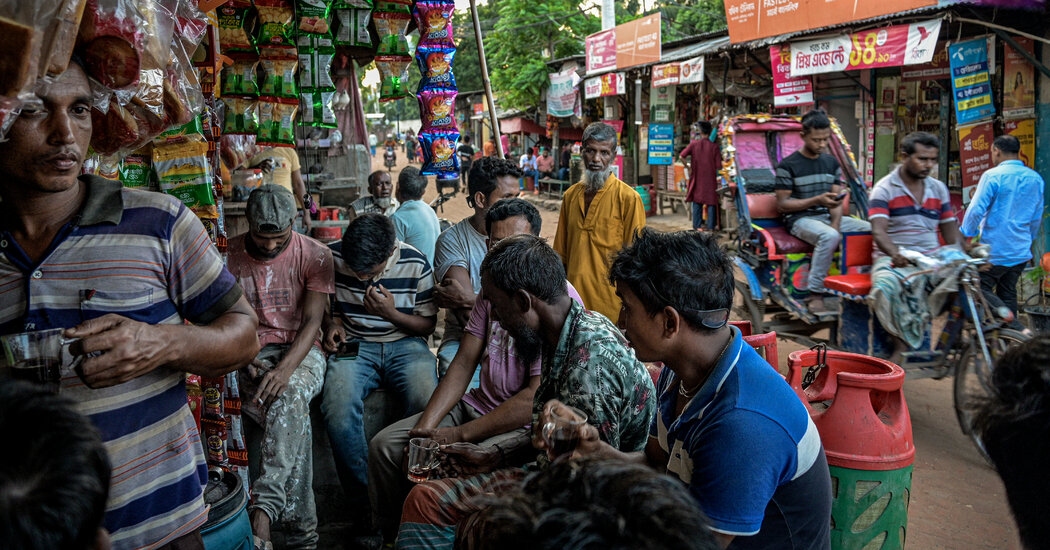For more than half a century, the handbook for how developing countries can grow rich hasn’t changed much: Move subsistence farmers into manufacturing jobs, and then sell what they produce to the rest of the world.
The recipe — customized in varying ways by Hong Kong, Singapore, South Korea, Taiwan and China — has produced the most potent engine the world has ever known for generating economic growth. It has helped lift hundreds of millions of people out of poverty, create jobs and raise standards of living.
The Asian Tigers and China succeeded by combining vast pools of cheap labor with access to international know-how and financing, and buyers that reached from Kalamazoo to Kuala Lumpur. Governments provided the scaffolding: They built up roads and schools, offered business-friendly rules and incentives, developed capable administrative institutions and nurtured incipient industries.
But technology is advancing, supply chains are shifting, and political tensions are reshaping trade patterns. And with that, doubts are growing about whether industrialization can still deliver the miracle growth it once did. For developing countries, which contain 85 percent of the globe’s population — 6.8 billion people — the implications are profound.
Today, manufacturing accounts for a smaller share of the world’s output, and China already does more than a third of it. At the same time, more emerging countries are selling inexpensive goods abroad, increasing competition. There are not as many gains to be squeezed out: Not everyone can be a net exporter or offer the world’s lowest wages and overhead.
There are doubts that industrialization can create the game-changing benefits it did in the past. Factories today tend to rely more on automated technology and less on cheapworkers who have little training.
“You cannot generate enough jobs for the vast majority of workers who are not very educated,” said Dani Rodrik, a leading development economist at Harvard.
The process can be seen in Bangladesh, which the World Bank’s managing director called “one of the world’s greatest development stories” last year. The country built its success on turning farmers into textile workers.
Last year, though, Rubana Huq, chair of Mohammadi Group, a family-owned conglomerate, replaced 3,000 employees with automated jacquard machines to do complex weaving patterns.
The women found similar jobs elsewhere in the company. “But what follows when this happens on a large scale?” asked Ms. Huq, who is also president of the Bangladesh Garment Manufacturers and Exporters Association.
These workers don’t have training, she said. “They’re not going to turn into coders overnight.”
Recent global developments have accelerated the transition.
Supply chain meltdowns related to the Covid-19 pandemic and to sanctions prompted by Russia’s invasion of Ukraine drove up the price of essentials like food and fuel, biting into incomes. High interest rates, imposed by central banks to quell inflation, set off another series of crises: Developing nations’ debts ballooned, and investment capital dried up.
Last week, the International Monetary Fund warned of the noxious combination of lower growth and higher debt.
The supercharged globalization that had encouraged companies to buy and sell in every spot around the planet has also been shifting. Rising political tensions, especially between China and the United States, are affecting where businesses and governments invest and trade.
Companies want supply chains to be secure as well as cheap, and they are looking at neighbors or political allies to provide them.
In this new era, Mr. Rodrik said, “the industrialization model — which practically every country that has become rich has relied on — is no longer capable of generating rapid and sustained economic growth.”
Nor is it clear what might replace it.
There’s a future in service jobs.
One alternative might be found in Bengaluru, a high-tech center in the Indian state of Karnataka.
Multinationals like Goldman Sachs, Victoria’s Secret and the Economist magazine have flocked to the city and set up hundreds of operational hubs — known as global capability centers — to handle accounting, design products, develop cybersecurity systems and artificial intelligence, and more.
Such centers are expected to generate 500,000 jobs nationwide in the next two to three years, according to the consulting firm Deloitte.
They are joining hundreds of biotech, engineering and information technology companies including homegrown giants like Tata Consultancy Services, Wipro and Infosys Limited. Four months ago, the American chip company AMD unveiled its largest global design center there.
“We have to move away from the idea of classic development stages, that you go from the farm to the factory and then from the factory to offices,” said Richard Baldwin, an economist at the IMD in Lausanne. “That whole development model is wrong.”
Two-thirds of the world’s output now comes from the service sector — a mishmash that includes dog walkers, manicurists, food preparers, cleaners and drivers, as well as highly trained chip designers, graphic artists, nurses, engineers and accountants.
In Bengaluru, formerly known as Bangalore, a general rise in middle-class living attracted more people and more businesses that, in turn, attracted more people and businesses, continuing the cycle, Mr. Baldwin explained.
Covid sped this transition, by forcing people to work remotely — from a different part of town, a different city or a different country.
In the new model, countries can focus growth around cities rather than a particular industry. “That creates economic activities which are fairly diverse,” Mr. Baldwin said.
“Think Bangalore, not South China,” he said.
Free markets are not enough.
Many developing nations remain focused on building export-oriented industries as the path to prosperity. And that’s how it should be, said Justin Yifu Lin, dean of the Institute of New Structural Economics at Peking University.
Pessimism about the classic development formula, he said, has been fueled by a misguided belief that the growth process was automatic: Just clear the way for the free market and the rest will take care of itself.
Countries were often pressured by the United States and the international institutions to embrace open markets and hands-off governance.
Export-led growth in Africa and Latin America stumbled because governments failed to protect and subsidize infant industries, said Mr. Lin, a former chief economist at the World Bank.
“Industrial policy was taboo for a long time,” he said, and many of those who tried failed. But there were also success stories like China and South Korea.
“You need the state to help the private sector overcome market failures,” he said. “You cannot do it without industrial policy. ”
It won’t work without education.
The overriding question is whether anything — services or manufacturing — can generate the type of growth that is desperately needed: broad based, large scale and sustainable.
Service jobs for businesses are multiplying, but many offering middle and high incomes are in areas like finance and tech, which tend to require advanced skills and education levels far above what most people in developing nations have.
In India, nearly half of college graduates don’t have the skills they need for these jobs, according to Wheebox, an educational testing service.
The mismatch is everywhere. The Future of Jobs report, published last year by the World Economic Forum, found that six in 10 workers will need retraining in the next three years, but the overwhelming majority won’t have access to it.
Other kinds of service jobs are proliferating, too, but many are neither well paid nor exportable. A barber in Bengaluru can’t cut your hair if you’re in Brooklyn.
That could mean smaller — and more uneven — growth.
Researchers at Yale University found that in India and several countries in sub-Saharan Africa, agricultural workers jumped into consumer service jobs and raised their productivity and incomes.
With a weakening global economy, developing countries will need to wring every bit of growth they can from every corner of their economies. Industrial policy is essential, Mr. Rodrik of Harvard said, but it should focus on smaller service firms and households because that is going to be the source of most future growth.
He and others caution that even so, gains are likely to be modest and hard won.
“The envelope has shrunk,” he said. “How much growth we can get is definitely less than in the past.”




